Sports
From piano lessons to swimming, Tara VanDerveer's success is rooted in non-stop learning

PALO ALTO, Calif. — Almost nothing about Tara VanDerveer’s home would imply a basketball coach, let alone one who is about to become the winningest college basketball coach ever, has resided there for nearly 30 years. The muted yellow walls and decor — several large framed florals painted years ago by a friend — are tasteful but minimal. The coffee table books are mostly National Geographic travel tomes.
Her home gym displays some memorabilia, but the only room that might truly give it away is her “office,” a generous term as it more closely resembles a windowless walk-in closet. But this is VanDerveer’s preference — understated and neatly organized (though VanDerveer calls the office itself, generally stuffed to the brim, “a disaster”). On occasion, she’ll display on her fridge a photo of herself sitting with former Tennessee coach Pat Summitt and former UCLA and Cal State Fullerton coach Billie Moore — three Hall of Famers — as a reminder to enjoy every day. But the sparse memorabilia and occasional photo are the only slightest clues that a rather successful coach calls this place home.
For VanDerveer, the crown jewels of her house are the seven redwood trees in the backyard. They stretch upward like forestial skyscrapers, transplanted into her property 12 years ago and grown considerably since then. Five are younger trees, but the two eldest are likely north of 70 years old, just like VanDerveer. From time to time, she finds herself walking around the backyard with her dogs, Piper and Enzo, gazing skyward, admiring the sturdy giants that have come to withstand time, drought and fire.
“They’re beautiful trees; they’re very resilient trees,” VanDerveer says. “Their roots grow underneath and they support each other. They’re really tall, but they remind me of a team in that they’re holding each other up.”
There were no redwoods in the Northeastern or Midwestern states where VanDerveer spent the majority of her formative years — a childhood in Massachusetts and New York, her early years in college basketball at Indiana, Idaho and Ohio State. But when she moved to Northern California in 1985 to become Stanford’s head coach, she was awestruck by the mighty redwoods.
There’s no definitive explanation why redwoods grow so tall. Part of it is their lifespans; some age up to 2,000 years largely due to their bark, which protects them from disease, and a thick husk that shields them against fires. They are completely different from most other trees in that way. But why they reach such heights? No one knows exactly.
In the 1960s when author John Steinbeck traveled across the country and came upon Northern California, he wrote, “The redwoods, once seen, leave a mark or create a vision that stays with you always. … From them comes silence and awe. It’s not only their unbelievable stature, nor the color which seems to shift and vary under your eyes, no, they are not like any trees we know, they are ambassadors from another time.”
VanDerveer sees her best teams as these redwoods. Players who stood on their own, but whose roots stretched underground and toward one another, supporting each other while withstanding drought and fire, becoming ambassadors of a changing game. If that is so, then she is that mysterious element answering the question: How do they grow so tall?
GO DEEPER
From Idaho to iconic titles: Top 10 Tara VanDerveer moments as Stanford coach nears all-time wins record
“It was her high standards, which start with herself,” says Jennifer Azzi, who played for VanDerveer at Stanford from 1986-90 and won a gold medal with VanDerveer in the 1996 Olympics. “If there’s one word that describes her it’s excellence. Excellence in every single thing she does and attempts. … That has never changed over the years. She has never compromised herself or her values.”
Few coaches have lasted as long on a sideline as she, and they only got there by finding these special players and developing teams. Mostly, they stay by winning. It was maybe the first lesson she learned in basketball. With no girls’ teams to play on, the golden rule she learned during pick-up games at the park: Winner stays. It remains true in college coaching, too.
On Sunday, she could pass former Duke coach Mike Krzyzewski as the winningest college basketball coach of all time with 1,203 wins. Even to her, that number is hard to comprehend. She didn’t set out to get to this pinnacle, but here she is. For every 100 wins, Stanford presented her with a custom-painted basketball. Eventually, she had so many she had to move them from a bookshelf to a wall shelf, and now that shelf — which stretches across the full length of her office — houses all 12 basketballs. It can’t get any longer at this point, so she just keeps moving the basketballs closer together.
She has 17 30-win seasons, more than the rest of the Pac-12 schools combined. She has won three national titles and led the Cardinal to 14 Final Fours. She has been named the national coach of the year five times and the Pac-12 coach of the year 17 times. VanDerveer has won more games than 344 Division I programs.
And while those numbers lay out the framework of this moment, they don’t explain how she got to this point. To accomplish that, she has seemingly done the impossible — remaining steady yet constantly evolving, being flexible yet obstinate in the ways that mattered, remaining curious but never losing her focus.
VanDerveer credits her parents — both educators — for teaching her to value education and relationships. She cites her mom’s wisdom — “be a duck, let it roll off your back” — with her ability to keep focused on what matters most and trying not to fret about the rest.
She often tells about an interview for a coaching job in which she was asked to explain her philosophy. She responded: Work. When asked to expand, she said: Hard work.
As a coach, she maintained a standard no matter the team or season, from her JV squad at Ohio State to her national championship teams in Palo Alto. Even in her first year at Stanford — the only one in her 45 seasons with a losing record — she operated the same way. Stanford was rebuilding and not as elite as the school from which she had come, Ohio State, but she wanted the team to bond and build, to grow strong and tall. That was a non-negotiable. So she sought out feedback for that growth. She asked her players and assistants questions. She even pulled aside the team’s trainer after practice to ask for her thoughts on the day.
“She was always interested in other people’s insights and observations,” said Charli Turner Thorne, who played for VanDerveer at Stanford from 1985-88 and coached against her at Arizona State from 1996-2022. “We’re like, ‘Tara, the athletic trainer doesn’t know anything about basketball.’ But she was this visionary who was always looking to shape her teams.”
When VanDerveer started at Stanford, there was no 3-point line in the college game. The Cardinal, like many, used a power approach and took high-percentage shots close to the basket. But when the line was introduced before the 1987-88 season, VanDerveer did the simple math and informed her players they were going to learn outside shooting. Within five seasons, Stanford was attempting 13 a game — a key part of their first national title run.
With the 3-point shot, VanDerveer and Stanford mastered the triangle offense. In 2008, Stanford played UC Davis, which had just transitioned to Division I. Stanford easily won by 35, but after the game, VanDerveer pulled aside head coach Sandy Simpson and said she was impressed with the mechanisms of the Princeton offense that UC Davis had run. Simpson pointed VanDerveer in the direction of one of her young assistants, Jennifer Gross.
“Here I am, a new assistant coach at a former Division II school, and Tara’s like, ‘Who can I talk to about learning this offense? Would you be able to help?’” said Gross, now the UC Davis head coach. “It was a bit of a ‘What is going on here?’ … But she’s like, ‘I’m going to learn from anybody.’”
Over the next several years, VanDerveer and Gross talked about the offense often, with Gross and her husband, Joe Teramoto, making multiple trips to Palo Alto to walk through the offense on the floor and watch film with VanDerveer. In 2021, the Cardinal won the national title running VanDerveer’s version of this offense.
In her personal life, VanDerveer, 70, takes the same approach. In her 40s, she started piano lessons and dove in. The teacher, Jodi Gandolfi suggested a 30-minute lesson. VanDerveer countered with 90 minutes. They compromised … at 90. With lessons beginning in February, VanDerveer requested Stanford’s team schedulers to ensure every road-game hotel had a piano available so she could practice.
Gandolfi, who hadn’t worked with beginners in decades, assumed that like most novices, VanDerveer would want to start where most beginners started — learning a simple song. But Gandolfi was struck by her student’s approach. Recalled Gandolfi: “She wanted to learn how to practice. She wanted to learn music theory.”
While at Stanford, VanDerveer took up swimming laps and visited the pool three mornings a week. On mornings when Olympians like Katie Ledecky and Simone Manuel were in their lanes, she’d study their form and compare it to her own. When VanDerveer bought a ski boat about a decade ago, she sought out skilled ski partners who’d hit the water with her every summer morning and offer feedback on her technique.

Tara VanDerVeer applauds her team during the 2009 Final Four game against Connecticut. (Tim Vizer / Tribune News Service via Getty Images)
But, as in hoops, much about VanDerveer remains unchanged. Namely, the haircut, the iconic bob that has been her signature look for decades. When she moved to Palo Alto, VanDerveer had a stylist cut her hair, but when that woman retired, the stylist’s daughter began cutting it. No one else has had VanDerveer in a salon chair since.
“There’s slight variation, but it is pretty similar,” VanDerveer admits.
In the past few seasons, college sports has changed at a faster-than-ever pace. NIL was introduced. The transfer portal opened up. And next season, VanDerveer and the Cardinal will join the ACC as the Pac-12 (as it’s currently set up) will fold. “She just really understands the big picture,” says Stanford associate head coach Kate Paye, who played for VanDerveer from 1991-95. “It isn’t all about winning for her, it’s about building lifetime relationships and mentoring women and empowering women.”
She has stayed on top of changes and worked to shepherd the next generation of women’s basketball, its players and coaches. Her recent teams have loosely formed committees on food, travel and entertainment so she can take more input from the players. She has become a mentor and sounding board to not only the coaches she knows well, but even to those she doesn’t. This fall, when Florida State coach Brooke Wyckoff was diagnosed with breast cancer, VanDerveer sent her a hand-written letter. The two had never met. When the Cardinal played Albany earlier this season, she suggested swapping scouting reports so each team could learn more about themselves, something she has done with several other nonconference opponents over the years. When the Cardinals’ NCAA Tournament runs have ended early, she’s sometimes handed over her own scouting reports of potential March Madness opponents to her fellow Pac-12 coaches.
Most of this has been done without fanfare or attention — the way she likes it.
When VanDerveer passed Pat Summitt to become the winningest women’s college basketball coach in the 2020-21 season, the Cardinal were on the road at Pacific with no fans in the crowd because of pandemic protocols. The bench was spaced with six feet between each chair. Everyone wore masks except the players on the floor. Her achievement was met with a subdued celebration that included only the team. Admittedly, VanDerveer enjoyed the intimacy of that.
Players presented her with a fleece jacket to wear to the pool. “T-DAWG,” it read on the back.
This next milestone will be different. Stanford is celebrating alumni weekend with dozens of former players coming into town. Pomp and circumstance, two words VanDerveer doesn’t love, will be directed at her. Even with No. 8 Stanford at 15-2, VanDerveer has been fitting in interviews and photoshoots in every spare moment. Everyone wants to know the secrets to her success, wants to know how she did it.
Unlike the redwoods, the answer is quite obvious.
She evolved but stayed the same. She was flexible yet unwavering. She remained a student and a teacher whose roots have allowed her to finally reach heights that no others have.
(Illustration and data visual: John Bradford / The Athletic; Photos of Tara VanDerveer: Cody Glenn / Icon Sportswire, Jack Dempsey / Getty Images)

Sports
Former Bears quarterback Bob Avellini dead at 70
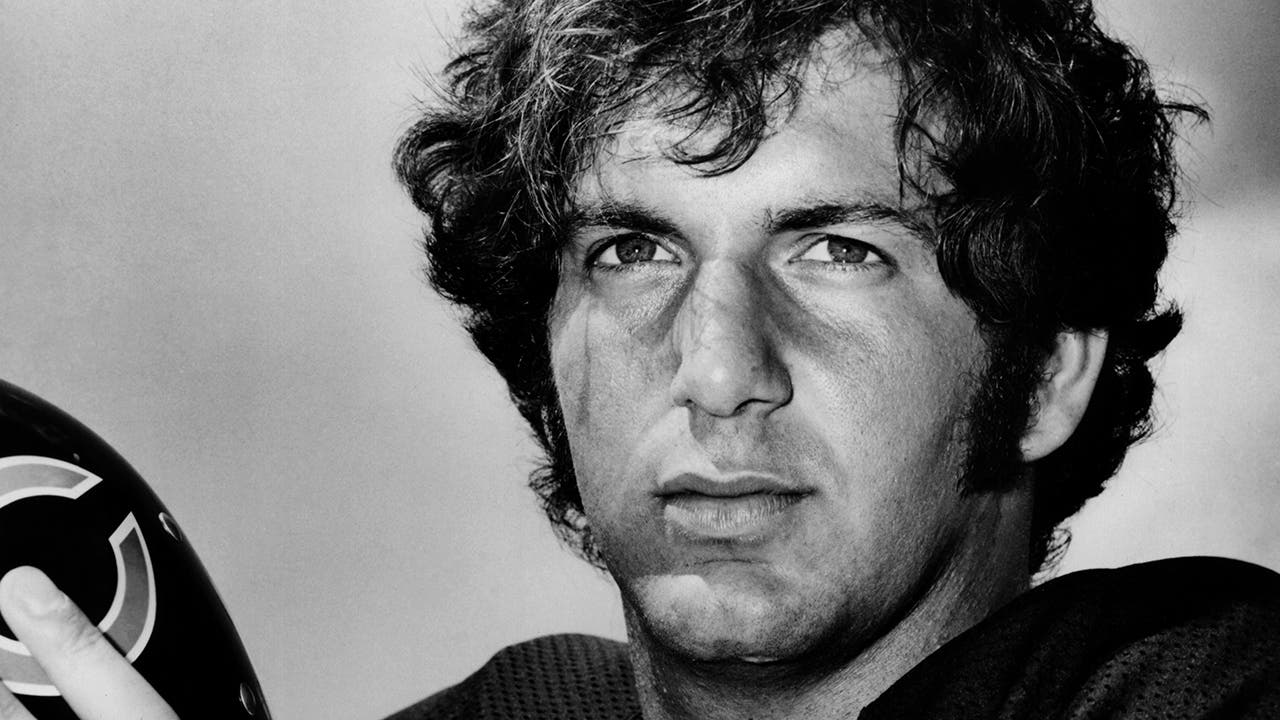
Former Chicago Bears quarterback Bob Avellini, who spent all nine of his NFL seasons in the Windy City, died Saturday. He was 70 years old.
The Bears announced that Avellini lost a battle with cancer.
“Bob was one-of-a-kind, a fierce and tough competitor,” the Bears said in a statement. “He’s perhaps best remembered for leading the Bears on an improbable run in 1977 to our first postseason appearance in fourteen years. He will be missed.”
Bob Avellini of the Chicago Bears drops back to pass during the game against the New Orleans Saints at Soldier Field in Chicago on Oct. 2, 1977. Avellini played for the Bears from 1975 to 1984. (Focus on Sport/Getty Images)
In 1977, both Avellini and Walter Payton, the Bears’ star running back who reached the Hall of Fame, had their best career seasons.
Payton was certainly the beating heart of Chicago’s offense, rushing for a league-high 1,852 yards with 14 touchdowns on the ground.
MAHOMES MOUNTAIN: WHERE DO CALEB WILLIAMS, ROOKIES LAND ON NICK WRIGHT’S QB TIERS?
But Avellini had a career-high 2,004 yards on 154 completions with 11 touchdowns over 14 games.
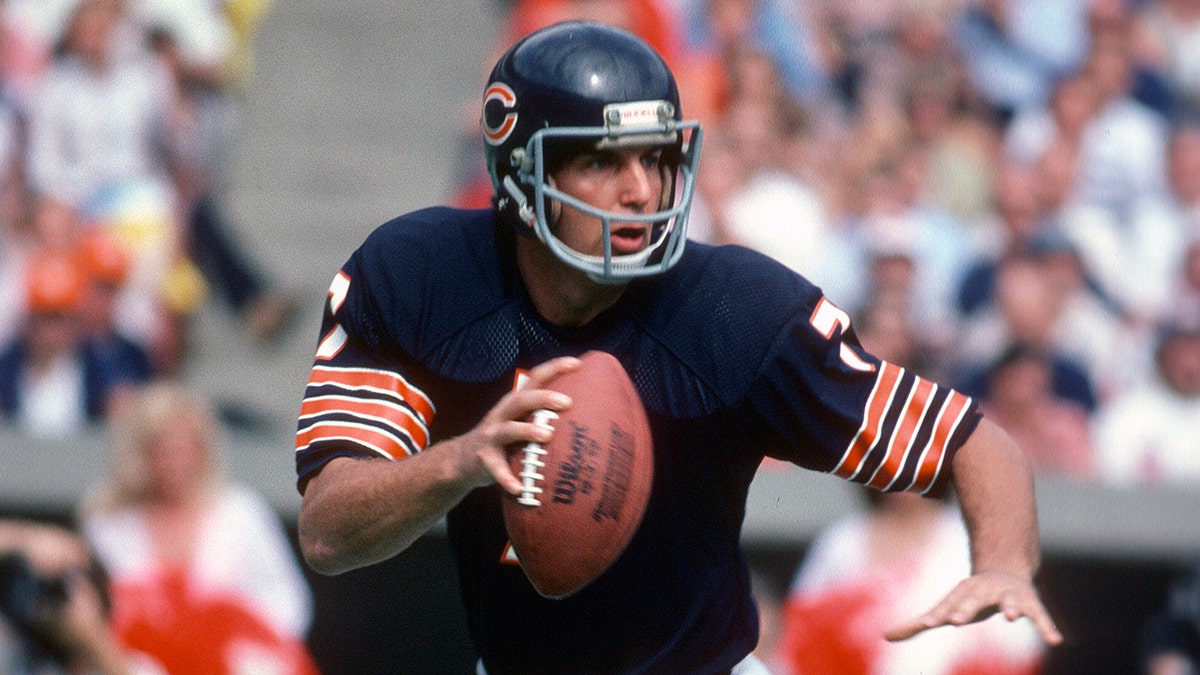
Bears quarterback Bob Avellini is shown during a game at Soldier Field in Chicago circa 1977. (Focus on Sport/Getty Images)
As the team’s statement said, the Bears hadn’t made the playoffs in 14 years until 1977, when they finally broke the drought. However, the Bears were blown out by the Dallas Cowboys, 37-7, and Avellini threw four interceptions to one touchdown on 25 attempts.
Avellini had a 23-27 regular-season record in 73 games from 1975 through 1984, throwing for 7,111 yards and 33 touchdowns.

Quarterback Bob Avellini of the Chicago Bears is shown circa 1979. (Bruce Bennett Studios via Getty Images Studios)
The Queens, New York City, native was in the same draft class as Payton, with the Bears picking Avellini 135th overall in the sixth round of the 1975 NFL Draft out of Maryland.
Follow Fox News Digital’s sports coverage on X and subscribe to the Fox News Sports Huddle newsletter.
The Associated Press contributed to this report.
Sports
Kentucky Derby winner Mystik Dan might be skipping Preakness Stakes
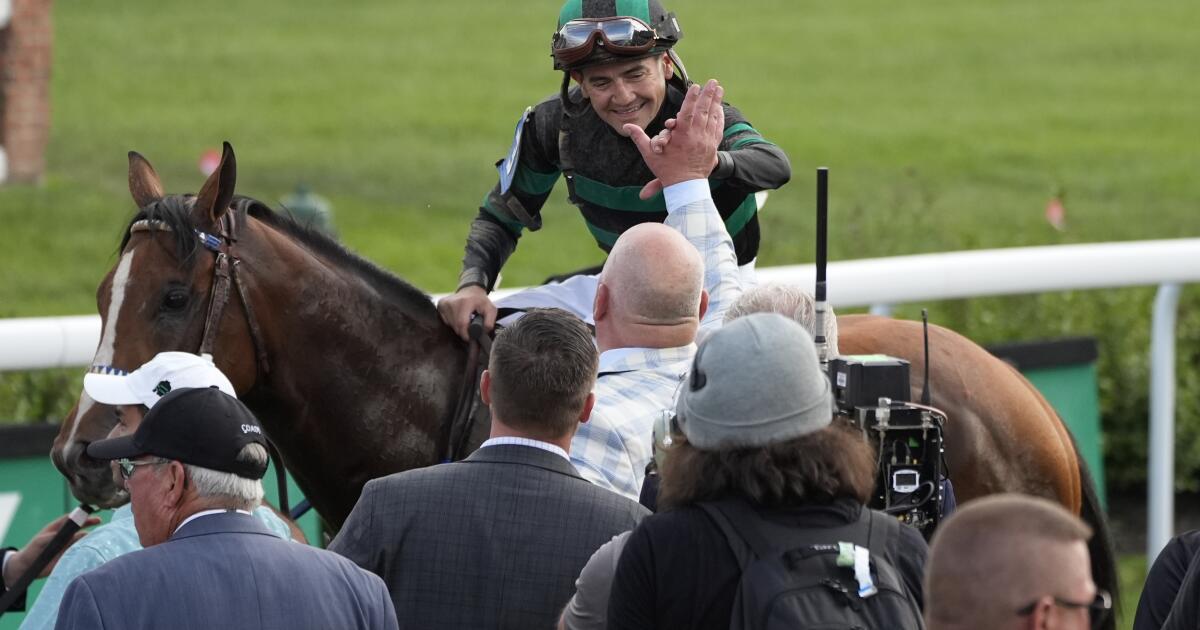
Mystik Dan’s road to the Triple Crown might be taking a detour before the Preakness Stakes. Kenny McPeek, trainer of the Kentucky Derby winner, said Sunday morning that he has not committed to going to Baltimore to race May 18 after the horse seemed a little off after Saturday’s victory.
“We’re not committed to the Preakness,” McPeek said. “I ran him back once in two weeks and it completely backfired on me.”
One thing that trainers use to gauge a horse’s fitness is how they eat. In short, an empty feed bucket means a happy horse.
“Most trainers don’t talk about all this,” McPeek said. “Look, cards on the table, face up. He left three-quarters of his feed. We couldn’t hardly get everybody out of the barn until midnight, so he didn’t really get a great night’s rest. We’ll watch him today and tomorrow.”
At this point it is closer to a coin flip more than anything else if Mystik Dan will run in the Preakness. There is no need to take any chances with a colt whose breeding value jumped exponentially after winning the Kentucky Derby by the slimmest of noses.
“The back story on that [two-week reference] is that I ran the colt back too quick in November,” McPeek said on Saturday night before knowing about Sunday’s development. “He won really easy in his maiden race and I wanted to stretch him out and it was the end of the season.
Mystik Dan trainer Kenny McPeek raises the trophy with his family after winning the 150th running of the Kentucky Derby on Saturday at Churchill Downs.
(Michael Reaves / Getty Images)
“I ran him back in an allowance race going a mile and he coughed up a lung infection on me. Learned a little lesson there with him. I feel if a horse is doing good and we can win a race, let’s give it a run. That one backfired.”
McPeek said a decision might not be made until next Monday when entries are taken for the Preakness. It’s not unusual for a horse to be shipped to Baltimore on the Wednesday before the race.
“We’re going to have a lot of input,” co-owner Lance Gasaway told Horse Racing Nation. “It’s all about the horse. Let’s see how the horse comes out of the race. Give him two or three days. If he comes out good, we’ll look at it. If not, we’ll worry about the horse more than anything.”
If he doesn’t go, it will spoil his rematch with Muth. Mystik Dan finished third in the Arkansas Derby while Muth won it. But Muth was not eligible to run in the Kentucky Derby because he is trained by Bob Baffert, who is in the third year of a ban that was originally set at two years. Churchill Downs barred him from its properties after Medina Spirit tested positive for a legal medication that is banned on race day after winning the 2021 Derby. Baffert has had no horses fail a test since then.
Baffert is expected to also enter Imagination, who finished second in the Santa Anita Derby to Stronghold, who finished seventh in the Derby. Baffert has won the Preakness eight times, including last year with National Treasure.
If Mystik Dan does not go to Baltimore it would heighten the conversation about the relevance of the Preakness Stakes at a time that most horses don’t come back on two weeks’ rest. The Stronach Group, which owns Santa Anita Park, just turned over Pimlico Race Course to the state of Maryland but still retains the intellectual properties of the Preakness Stakes.
Aidan Butler, chief executive of its racing division, has been floating ideas that the Triple Crown should be retooled with each race held a month apart rather than two weeks from the Derby to the Preakness and three weeks from the Preakness to the Belmont. This could certainly bolster his argument.
There is no doubt that current training patterns do not favor a two-week turnaround. Last year there was only one Derby horse that ran in the Preakness, the only one that mattered, Derby winner Mage. The previous year, Rich Strike skipped the Preakness. In 2021, Medina Spirit ran in the Preakness and finished third. The Derby result was overturned and Mandaloun was declared the winner, so technically the Derby winner was not in the race.
In 2020, the COVID year, the Preakness was held in October and the Derby winner, Authentic, was in the race. The Derby was run in September.
A survey of most of the other trainers by Churchill Downs media relations could not find any takers ready to go to Baltimore. The jockey for T O Password, Kazishi Kimura, indicated on Saturday that he thought the horse could go to the Preakness. But the people who pay the bills have him headed back to Japan.
“He’s good this morning, no problems but he is tired,” Kimura said. “It is what it is. He missed the first step and from there I followed Sierra Leone. He tried hard all the way.”
The second-place finisher, Sierra Leone, will be skipping the Preakness.
“He’s good, but he’s not going to the Preakness,” trainer Chad Brown said. “I’m going to take him to Saratoga tomorrow and he’s going to train there for the Belmont [Stakes]. He’s a little tired. He’s a real laid back horse but when we brought him out, he was a little more tired than he normally is after his races. I think giving him the five weeks to the Belmont is definitely the right thing to do.”
Regardless if Mystik Dan runs in two weeks, he’ll also be headed back to Saratoga, where McPeek has a home.

McPeek now has a career Triple Crown having won the Preakness in 2020 with Swiss Skydiver and the Belmont in 2002 with Sarava at 70-1 odds.
Will McPeek now start to get doubles on his career Triple Crown? The thinking is the answer lies in the feed bucket.
Sports
Mystik Dan wins 150th Kentucky Derby in photo finish
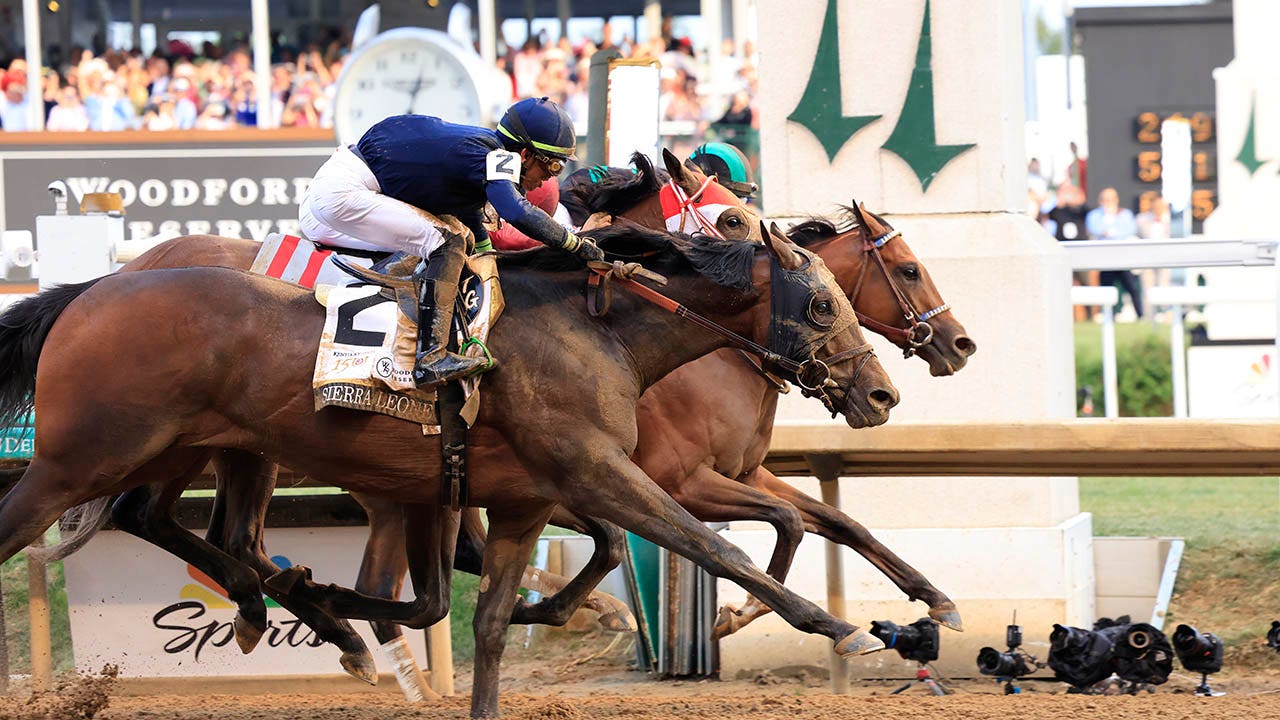
Mystik Dan (18-1) won the 150th Kentucky Derby Saturday in a photo finish.
It was the first time in 28 years the Kentucky Derby was won by a nose and just the 10th time ever.
Track Phantom (41-1) and Just Steel (21-1) led up until the ¾-mile mark, with Fierceness, the 3-1 favorite, in third. Mystik Dan, though, held the inside right behind them.
Mystik Dan, ridden by jockey Brian J. Hernandez Jr., crosses the finish line to win the 150th Kentucky Derby at Churchill Downs May 4, 2024, in Louisville, Ky. (Justin Casterline/Getty Images)
Mystik Dan, ridden by Brian Hernandez Jr., busted through the pack after the final turn. After the turn, Fierceness fell way behind.
Mystik Dan led by several lengths in the final stretch, but Sierra Leone (9-2), the second-highest favorite, crept up from the outside, pushing Japanese horse Forever Young toward the railing.
Those three horses were within noses of each other, but it was Mystik Dan’s that crossed the line first.
Sierra Leone finished second and Forever Young finished third, while Fierceness finished 15th, 24½ lengths behind.

A general view of Churchill Downs ahead of the 149th running of the Kentucky Derby May 6, 2023, in Louisville, Ky. (Michael Reaves/Getty Images)
This year’s race came with much less controversy than last year’s. A dozen horses died at Churchill Downs in the days, and even hours, leading up to last year’s race.
Notably absent from this year’s race was Hall of Fame trainer Bob Baffert, who’s two-year ban was extended through 2024, making this the third straight Kentucky Derby a Baffert-trained horse did not compete.
A six-time winner at the Derby, Baffert was banned after 2021 Kentucky Derby winner Medina Spirit was stripped of the title due to a failed post-race drug test. The horse died of a heart attack that December.

Visitors check out the new $200 million paddock at Churchill Downs Wednesday, May 1, 2024, in Louisville, Ky. (AP Photo/Charlie Riedel)
Mystik Dan will now begin the quest for a Triple Crown at the Preakness Stakes at Baltimore’s Pimlico Race Course May 18.
Follow Fox News Digital’s sports coverage on X, and subscribe to the Fox News Sports Huddle newsletter.
-

 Politics1 week ago
Politics1 week agoGOP lawmakers demand major donors pull funding from Columbia over 'antisemitic incidents'
-

 World1 week ago
World1 week agoHamas ‘serious’ about captives’ release but not without Gaza ceasefire
-
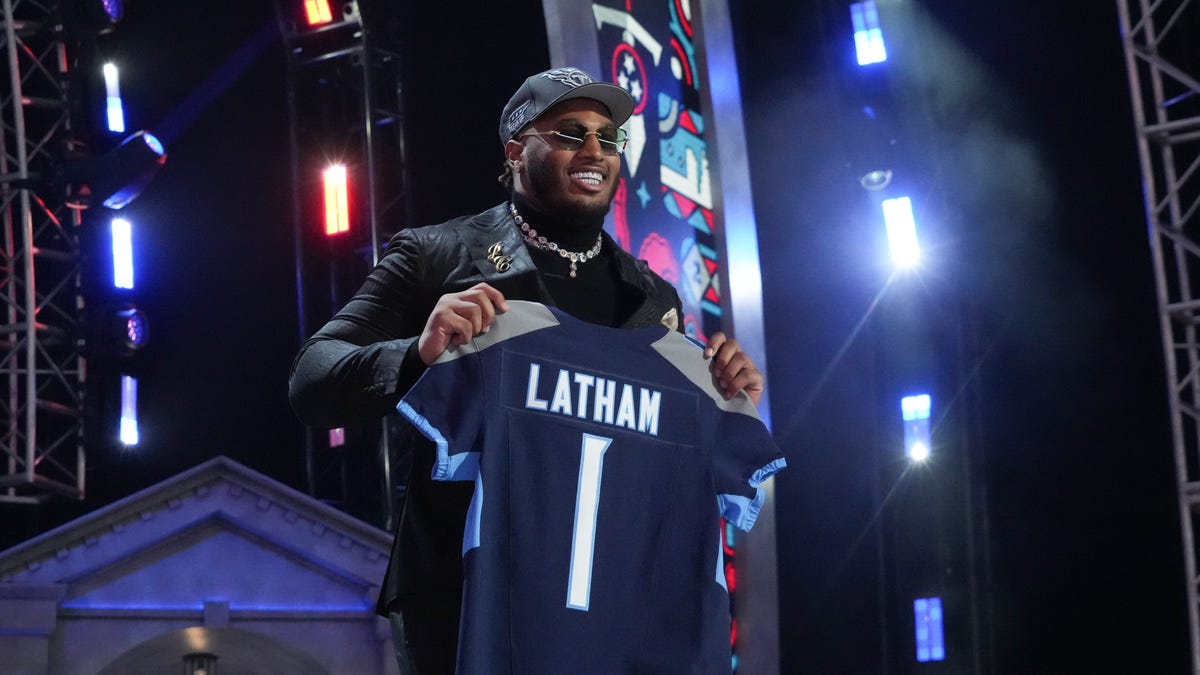
 Tennessee1 week ago
Tennessee1 week agoHow to buy JC Latham’s Tennessee Titans jersey after 2024 NFL Draft selection
-

 News1 week ago
News1 week agoBoth sides prepare as Florida's six-week abortion ban is set to take effect Wednesday
-

 Politics1 week ago
Politics1 week agoColumbia University’s policy-making senate votes for resolution calling to investigate school’s leadership
-
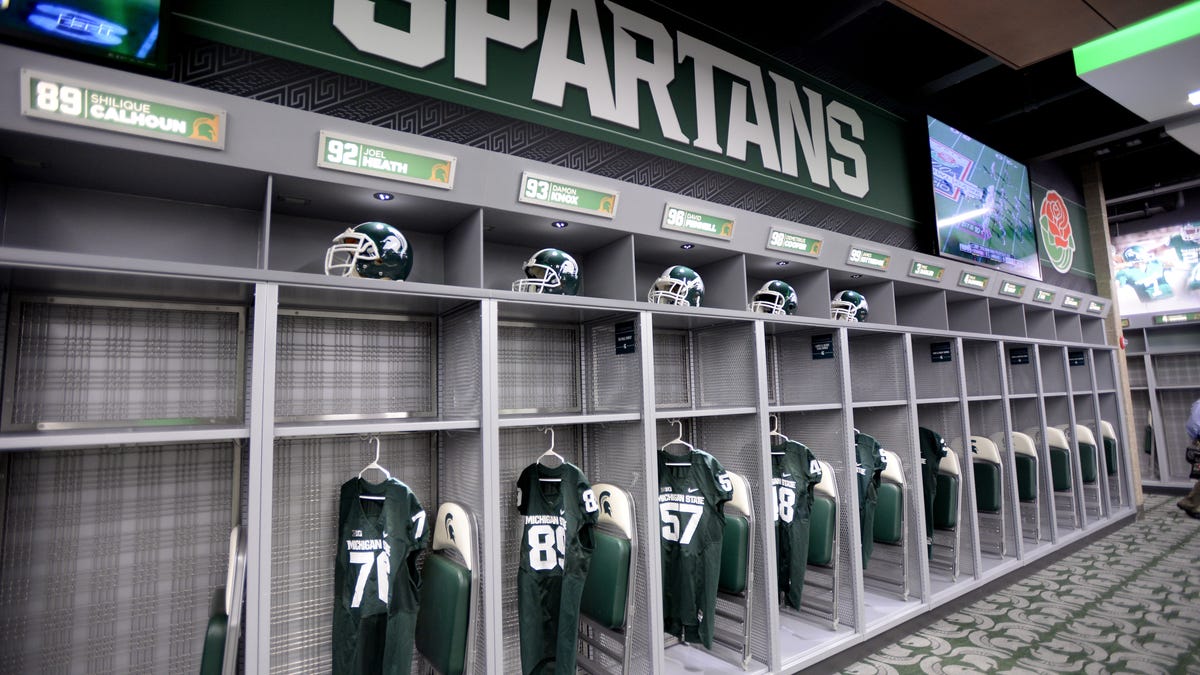
 Michigan1 week ago
Michigan1 week agoMichigan State football adds DT Brandon Lane from Stephen F. Austin
-

 Politics7 days ago
Politics7 days agoHouse Republicans brace for spring legislative sprint with one less GOP vote
-

 World7 days ago
World7 days agoAt least four dead in US after dozens of tornadoes rip through Oklahoma


















